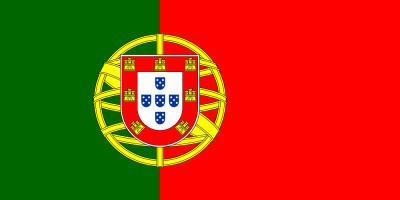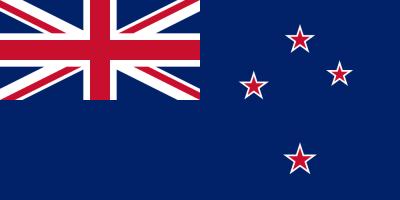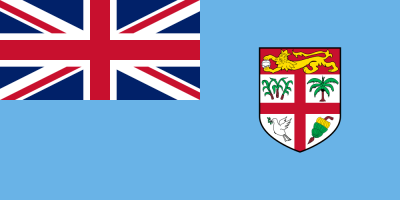Australia flag color codes is a recognizable blue canvas with the Union Jack in the canton and a large seven-pointed star known as the Commonwealth Star. The iconic design is boldly accentuated by the red and white colors of the flag. In this article, we provide the specific Australia flag color codes across various formats, including HTML HEX, RGB, PANTONE, HSL, CMYK, HWB, and NCOL. Whether you need the precise red, white and blue values for graphic design, web development, or any other digital or print projects, you can find the official Australia flag color codes here. With the color values provided below, you can accurately recreate the distinctive Australian flag and incorporate its colors into any application.
Table of Contents
What are the colors of Australia flag?
The colors of the Australian flag are:
- Blue – The background color of the flag is a deep blue. This represents the sky and the ocean surrounding Australia.
- Red – The Union Jack emblem in the top left corner (canton) is red. This represents Australia’s historic ties to the United Kingdom.
- White – The Commonwealth Star, the Southern Cross constellation, and the borders around the Union Jack are white. White symbolizes peace and unity.
The specific shades are:
- Australian Flag Blue: Pantone 280 C
- Australian Flag Red: Pantone 186 C
- Australian Flag White: No official Pantone shade, pure white
In summary, the flag contains dark blue, red, and white. The blue represents the sky and ocean, the red symbolizes the British heritage, and the white depicts unity and peace. These three colors come together to create the iconic visual design of the Australian flag.
Australia flag color codes & Color Names:
BLUE
| Color Model | Value |
|---|---|
| HTML | #00008B |
| HEX | 00008B |
| RGB | RGB(0, 0, 139) |
| PANTONE | Reflex Blue C |
| HSL | HSL(240, 100%, 27%) |
| CMYK | CMYK(100%, 100%, 0%, 45%) |
| HWB | HWB(240, 0%, 45%) |
| NCOL | #00007E |
WHITE
| Color Model | Value |
|---|---|
| HTML | #FFFFFF |
| HEX | FFFFFF |
| RGB | RGB(255, 255, 255) |
| PANTONE | N/A |
| HSL | HSL(0, 0%, 100%) |
| CMYK | CMYK(0%, 0%, 0%, 0%) |
| HWB | HWB(0, 100%, 0%) |
| NCOL | #FFFFFF |
RED
| Color Model | Value |
|---|---|
| HTML | #FF0000 |
| HEX | FF0000 |
| RGB | RGB(255, 0, 0) |
| PANTONE | Pantone 185 C |
| HSL | HSL(0, 100%, 50%) |
| CMYK | CMYK(0%, 100%, 100%, 0%) |
| HWB | HWB(0, 0%, 0%) |
| NCOL | #D52B1E |
What is the meaning of colors in the Australia flag?
Blue – The dark blue background represents the sky and the ocean surrounding Australia. It conveys the country’s reliance on the sea and close ties to the water. The blue also represents faithfulness and strength.
Red – The red in the Union Jack symbolizes the historical ties Australia shares with the United Kingdom. The red embodies the pride, valor and courage of the Australian people.
White – The white Commonwealth Star and trim signify peace and unity among the six states and territories of Australia. White represents perfection, innocence and safety.
Additional symbolic meanings:
- Blue, white and red together reflect the country’s British maritime heritage.
- The blue and red echo the colors of the Aboriginal flag as well, showing respect.
- White signifies dawn and a new era for the nation.
In summary, blue represents the Australian landscape, red reflects British ties and courage, and white indicates unity and peace. The colors showcase Australia’s landscape, heritage and national spirit.
Explore More Flag Colors:
FAQs: Frequently Asked Questions:
What is Australia is famous for?
Australia is known for a variety of distinctive features and attractions. Here are some things Australia is famous for:
Unique Wildlife: Australia is home to a diverse range of unique and often endemic wildlife, including kangaroos, koalas, wallabies, wombats, and various species of marsupials, birds, and reptiles.
Great Barrier Reef: The Great Barrier Reef, located off the coast of Queensland, is the world’s largest coral reef system. It is renowned for its breathtaking marine biodiversity and attracts divers and snorkelers from around the globe.
Sydney Opera House: One of the most iconic landmarks, the Sydney Opera House is a masterpiece of modern architecture and a symbol of Australia. It hosts various performances and events.
Uluru (Ayers Rock): Located in the heart of the Northern Territory, Uluru is a massive sandstone monolith and a sacred site for the Indigenous people. It’s a UNESCO World Heritage site.
Sydney Harbour Bridge: Another iconic Sydney landmark, the Sydney Harbour Bridge is a major tourist attraction and offers stunning views of the city and the harbor.
Aboriginal Culture: Australia is rich in Aboriginal culture, with a history dating back tens of thousands of years. Visitors can learn about indigenous art, traditions, and history.
Unique Landscapes: Australia’s diverse landscapes include the Outback, rainforests, deserts, beaches, and mountains, offering a wide range of outdoor activities and experiences.
Surfing: Australia is a global surfing destination, with numerous world-class surf beaches along its extensive coastline.
Australian Open: Melbourne hosts one of the Grand Slam tennis tournaments, the Australian Open, attracting top tennis players and fans from around the world.
Vibrant Cities: Australia’s cities, including Sydney, Melbourne, Brisbane, and Perth, are known for their modern architecture, cultural institutions, and lively urban lifestyle.
What are 5 facts about Australia?
Here are five interesting facts about Australia:
Unique Wildlife: Australia is home to a wide array of unique and endemic wildlife. Some of the most iconic species include kangaroos, koalas, platypuses, wombats, and a variety of colorful parrots. The country’s diverse ecosystems support an incredible range of flora and fauna.
Largest Island and Smallest Continent: Australia is often referred to as both the world’s largest island and the smallest continent. It is entirely surrounded by water and separated from other continents, making it an island. However, due to its size and distinct geological characteristics, it is also considered a continent.
Great Barrier Reef: The Great Barrier Reef, located off the northeast coast of Australia, is the world’s largest coral reef system. It is composed of over 2,900 individual reefs and 900 islands, stretching over 2,300 kilometers (1,430 miles). The reef is a UNESCO World Heritage site and a haven for marine biodiversity.
Diverse Landscapes: Australia features a diverse range of landscapes, from the vast deserts of the Outback to lush rainforests, beautiful beaches, and mountain ranges. The country’s diverse geography offers a wide variety of outdoor activities and stunning natural scenery.
Indigenous Culture: Australia has a rich Indigenous history dating back tens of thousands of years. The Aboriginal and Torres Strait Islander peoples have a deep connection to the land and possess a unique cultural heritage. Indigenous art, Dreamtime stories, and traditional practices continue to play a significant role in Australian culture.
Is Australia is a developed country?
Yes, Australia is considered a developed country. It is classified as a high-income country with a well-established and advanced economy. Australia has a high standard of living, a robust infrastructure, a well-developed healthcare system, and a strong educational system.
What is the best place to live in Australia?
Here are some of the most popular and well-regarded places to live in Australia:
Melbourne, Victoria:
Known for its cultural diversity, vibrant arts scene, and excellent coffee.
Offers a variety of neighborhoods with distinct personalities.
Often ranked highly for its quality of life.
Sydney, New South Wales:
Australia’s largest and most iconic city.
Boasts stunning landmarks like the Sydney Opera House and Sydney Harbour Bridge.
Offers diverse cultural experiences and a bustling urban lifestyle.
Brisbane, Queensland:
Known for its warm climate and outdoor lifestyle.
Growing cultural scene and riverside attractions.
Offers a more relaxed pace compared to Sydney and Melbourne.
Perth, Western Australia:
Known for its beautiful beaches and outdoor activities.
Has a growing economy and job opportunities, particularly in the mining and resources sector.
Adelaide, South Australia:
Often considered one of Australia’s most livable cities.
Known for its festivals, parks, and wine regions.
Offers a more affordable cost of living compared to some other major cities.
Canberra, Australian Capital Territory:
The capital city of Australia.
Known for its well-planned layout, government institutions, and cultural institutions.
Offers a quieter lifestyle compared to larger cities.
Hobart, Tasmania:
Offers a unique blend of history, culture, and natural beauty.
Known for its historic architecture and access to outdoor activities.
Has a slower pace of life compared to mainland cities.
What food is famous in Australia?
Some foods and dishes are particularly famous and popular in Australian cuisine. Here are a few:
Vegemite:
A yeast extract spread that is often eaten on toast or crackers. It has a distinctive salty and savory flavor and is a staple in many Australian households.
Tim Tams:
A popular chocolate biscuit (cookie) known for its layered construction, often enjoyed with a cup of tea or coffee. Tim Tams come in various flavors.
Pavlova:
A meringue-based dessert named after the Russian ballerina Anna Pavlova. It is typically topped with whipped cream and fresh fruits, making it a popular choice for special occasions.
Meat Pies:
Savory pies filled with minced meat (usually beef), gravy, and sometimes vegetables. They are a classic comfort food and often enjoyed at sporting events.
Barramundi:
A popular Australian fish known for its mild flavor and firm texture. It is often grilled, pan-fried, or steamed and is a common menu item in seafood restaurants.
Lamingtons:
Small sponge cakes coated in chocolate icing and desiccated coconut. Lamingtons are a traditional Australian sweet treat often served at parties and events.
Aussie BBQ:
Australians are known for their love of barbecues. Grilling meat, especially sausages and burgers, is a popular social activity, and many parks have public barbecue facilities.
Barramundi:
A popular fish in Australian cuisine, often prepared grilled, baked, or fried. Barramundi is known for its sweet and mild flavor.
Flat White Coffee:
A popular coffee choice in Australia, a flat white is similar to a latte but with a higher coffee-to-milk ratio and a thin layer of microfoam.
Kangaroo and Emu:
While not as common as other meats, kangaroo and emu are unique to Australia. They are often used in dishes like sausages, burgers, and steaks.
What is the climate in Australia?
The climate in Australia can be broadly categorized into four main types:
Tropical Climate:
Found in the northern parts of Australia, including northern Queensland and the Northern Territory.
Characterized by high temperatures throughout the year, with a distinct wet season (summer) and dry season (winter).
Tropical areas may experience cyclones during the wet season.
Subtropical Climate:
Found in the eastern parts of Australia, including parts of New South Wales and southeastern Queensland.
Summers are warm to hot, and winters are mild.
Rainfall can occur throughout the year, with some areas experiencing occasional droughts.
Desert Climate:
Found in the central parts of Australia, including the Outback regions.
Characterized by hot temperatures during the day and cool temperatures at night.
Limited rainfall, and some areas may experience extreme heat.
Mediterranean Climate:
Found in southern parts of Australia, including parts of Western Australia, South Australia, Victoria, and parts of New South Wales.
Summers are typically hot and dry, while winters are mild and wet.
Adelaide and Perth are examples of cities with a Mediterranean climate.
Temperate Climate:
Found in the southeast of Australia, including Melbourne and parts of Tasmania.
Summers are warm, and winters can be cool, with more pronounced temperature variations than in Mediterranean climates.
Snowfall can occur in mountainous regions during winter.
Oceanic Climate:
Found in some coastal areas of Tasmania and southern Victoria.
Characterized by mild temperatures throughout the year, with relatively consistent rainfall.
Hobart in Tasmania is an example of a city with an oceanic climate.
Is Australia a rich or Poor country?
Australia is generally considered a wealthy and developed country. It has a high-income economy, a strong and stable financial system, and a high standard of living. Australia has abundant natural resources, a well-developed infrastructure, and a diverse economy with sectors such as mining, agriculture, services, and technology.
What is the main source of income in Australia?
The key contributors to Australia’s economy include:
Mining and Resources:
Australia is rich in natural resources, and the mining sector plays a significant role in the economy. The country is a major exporter of minerals such as iron ore, coal, gold, and natural gas.
Services Sector:
The services sector is a major component of Australia’s economy. This includes finance, banking, tourism, education, healthcare, and professional services. Cities like Sydney and Melbourne are financial hubs.
Agriculture:
Agriculture contributes to Australia’s economy through the production of crops, livestock, and dairy products. The country exports a variety of agricultural goods, including wheat, beef, wool, and wine.
Manufacturing:
While manufacturing has declined as a percentage of the overall economy, Australia still has a manufacturing sector that produces goods such as machinery, food products, and chemicals.
Real Estate and Construction:
The real estate and construction sectors have been significant contributors to economic activity. Residential and commercial construction, as well as property development, play key roles.
Education Services:
Australia is a popular destination for international students, contributing to the economy through education services. Universities and educational institutions attract students from around the world.
Financial Services:
Australia has a well-developed financial sector, including banking, insurance, and investment services. Sydney, in particular, is known as a major financial center in the Asia-Pacific region.
Technology and Innovation:
The technology and innovation sector is growing, with a focus on startups, research, and development. Australia invests in technology and innovation to foster economic growth.
Which city of Australia is best for job?
Here are some of the major cities in Australia and their key industries:
Sydney, New South Wales:
Sydney is the largest city and a major financial hub in Australia.
It offers diverse job opportunities in finance, banking, information technology, media, and professional services.
Sydney is also a center for international business and trade.
Melbourne, Victoria:
Melbourne is known for its vibrant arts and culture scene.
It offers opportunities in finance, manufacturing, education, healthcare, and creative industries.
Melbourne is often ranked highly for its quality of life.
Brisbane, Queensland:
Brisbane is known for its warm climate and outdoor lifestyle.
It has a growing economy with opportunities in resources, energy, tourism, and construction.
The city is also a hub for the mining and resources sector.
Perth, Western Australia:
Perth is a major city in the resource-rich state of Western Australia.
It is a key center for the mining, oil, and gas industries.
Opportunities can be found in resources, construction, and related services.
Adelaide, South Australia:
Adelaide is known for its affordability and a growing defense and aerospace industry.
It offers opportunities in manufacturing, healthcare, and technology.
Adelaide has a focus on innovation and research.
Canberra, Australian Capital Territory:
Canberra is the capital city and the political center of Australia.
It has a strong public sector with opportunities in government, public administration, and policy-related roles.
The city also has a growing technology sector.
Is Australia cheap to live?
Here are some factors to consider:
City or Region:
Larger cities like Sydney and Melbourne tend to have a higher cost of living compared to smaller cities or regional areas. Housing costs, in particular, can be significant in major urban centers.
Housing Costs:
Housing is often one of the most significant expenses. Rent or mortgage payments can vary greatly depending on the location and type of accommodation.
Utilities and Services:
Utility bills, internet, and other services can contribute to the overall cost of living. Prices can vary by region and service providers.
Transportation:
Public transportation costs, fuel prices, and the need for a vehicle can impact living expenses. Some cities have efficient public transportation systems, while others may require more reliance on private vehicles.
Food and Groceries:
The cost of groceries and dining out can vary, with prices influenced by location, dietary choices, and lifestyle.
Healthcare:
Australia has a public healthcare system (Medicare), but there may be additional costs for private health insurance, medications, and other medical services.
Education:
If you have children, education costs, including school fees and extracurricular activities, should be considered.













